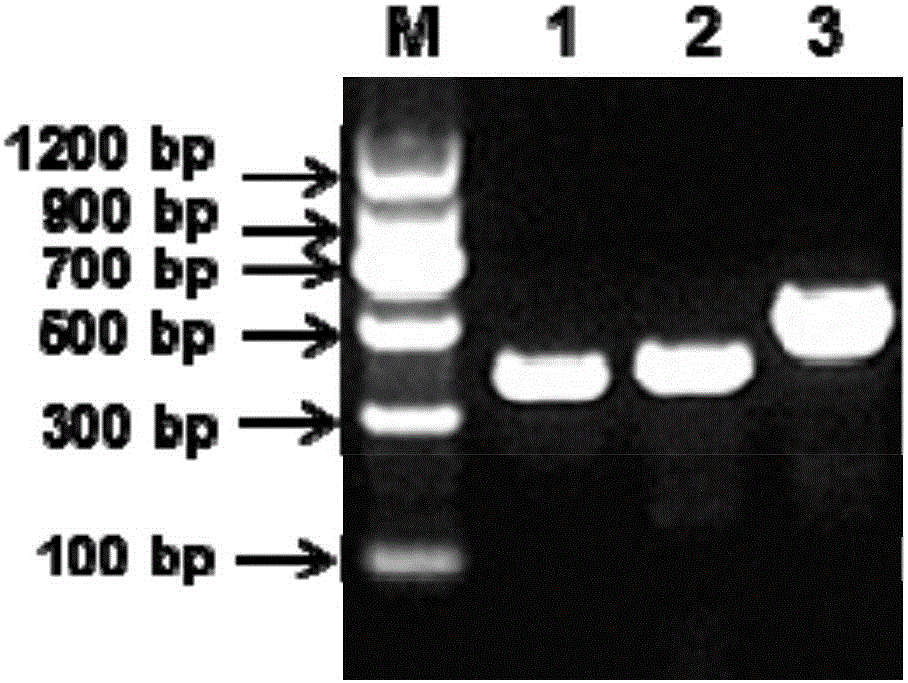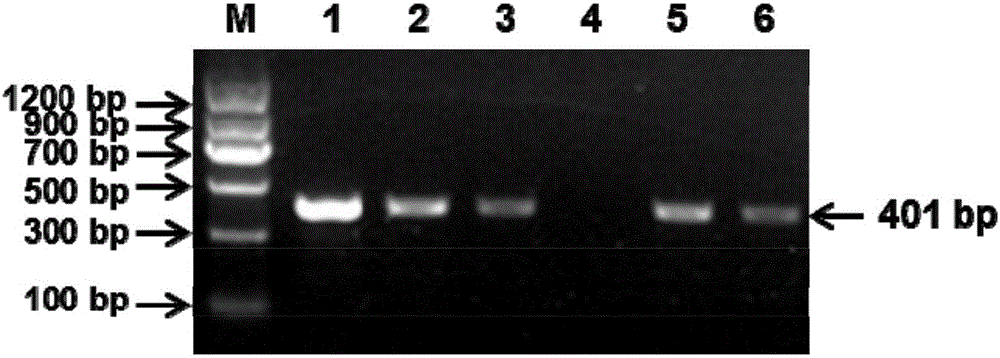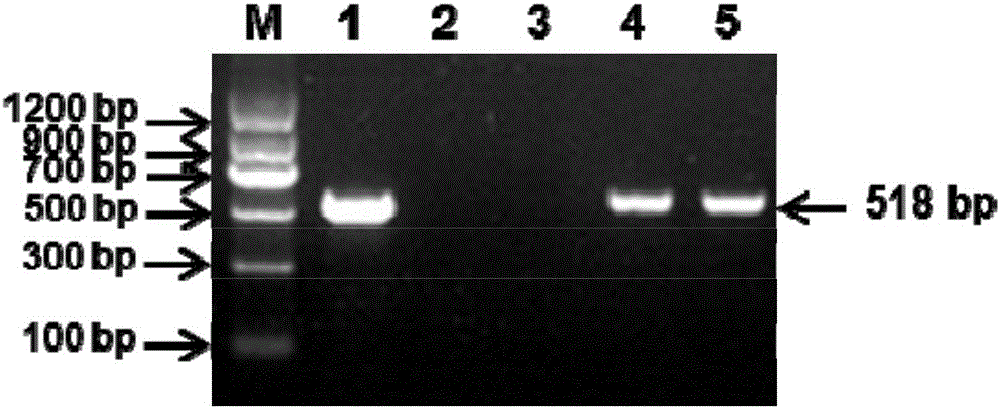Kit for detecting 4/91-type infectious bronchitis viruses
A bronchitis and infectious technology, applied in the field of molecular biology, can solve problems such as rapid diagnosis, and achieve the effects of low cost, convenient operation and high sensitivity
- Summary
- Abstract
- Description
- Claims
- Application Information
AI Technical Summary
Problems solved by technology
Method used
Image
Examples
Embodiment 1
[0035] Embodiment 1 is used to detect the design of the specific primer of 4 / 91 type infectious bronchitis virus
[0036] Specific primers were designed and screened with reference to the hypervariable region of the 4 / 91 type IBV-S1 gene sequence (GenBank accession number KF377577) registered in GenBank. Among the numerous candidate primers, after repeated screening and comparison tests to exclude possible non-specific matches between the primers and other species sequences, after repeated screening and verification, three sets of candidate primer pairs were finally obtained, and the three sets of Primer pairs were tested and the optimal primer pair was selected. Primers 1, 2, and 3 in Table 1 are all primers for the same target gene, and the positions of the three are adjacent. The electrophoresis results of each primer amplification were as follows: figure 1 , 2 and 3. The results showed that primers 2 and 3 could amplify other types of IBV strains with poor specificity,...
Embodiment 2
[0041] Example 2 Detecting RT-PCR Detection Method of 4 / 91 Type Infectious Bronchitis Virus The Exploration of Optimum Annealing Temperature
[0042] 1. Pretreatment of test samples
[0043] (1) Tissue sample processing: take 100 mg of organ tissue samples, add 0.5 ml of sterilized saline, grind and suspend with a grinder, centrifuge the tissue suspension at 3000 rpm for 30 min, and take the supernatant for detection and analysis.
[0044] (2) Allantoic fluid sample processing: after the sample was centrifuged at 3000 rpm for 30 min, the supernatant was taken for detection and analysis.
[0045] 2. Extraction of total RNA from samples
[0046] Extraction was performed according to the instructions of Trizol RNA Extraction Kit (Invitrogen).
[0047] 3. Reverse transcription into cDNA
[0048] Add the following components into a 0.2ml centrifuge tube: 4 μl of RNA solution, 1 μl of random primers, mix gently, bathe in 70°C water for 5 minutes, and ice-bath for 2 minutes, then ...
Embodiment 3
[0057] Embodiment 3 Detects the RT-PCR detection method of 4 / 91 type IBV optimal number of cycles to explore
[0058] For the pretreatment of the test sample, the extraction of the total RNA of the sample, and the reverse transcription into cDNA, refer to the corresponding method in Example 2. Using the conditions determined in Examples 1 and 2, 6 different cycle numbers (28, 29, 30, 31, 32 and 33) were designed to perform RT-PCR on 4 / 91 type IBV.
[0059] In the 0.2ml centrifuge tube, add composition with embodiment 2. After mixing gently, carry out the following reaction: pre-denaturation at 94°C for 5 minutes, 45s at 94°C, 45s at 58°C, and 25s at 72°C. ℃ extension 10min. PCR product electrophoresis experiment is referring to embodiment 2, electrophoresis result is as follows Figure 5 As shown, the target band amplified with 30 cycles is similar in brightness to more cycles, and there are no non-specific bands, which can save time and improve detection efficiency, so it ...
PUM
 Login to View More
Login to View More Abstract
Description
Claims
Application Information
 Login to View More
Login to View More - R&D
- Intellectual Property
- Life Sciences
- Materials
- Tech Scout
- Unparalleled Data Quality
- Higher Quality Content
- 60% Fewer Hallucinations
Browse by: Latest US Patents, China's latest patents, Technical Efficacy Thesaurus, Application Domain, Technology Topic, Popular Technical Reports.
© 2025 PatSnap. All rights reserved.Legal|Privacy policy|Modern Slavery Act Transparency Statement|Sitemap|About US| Contact US: help@patsnap.com



